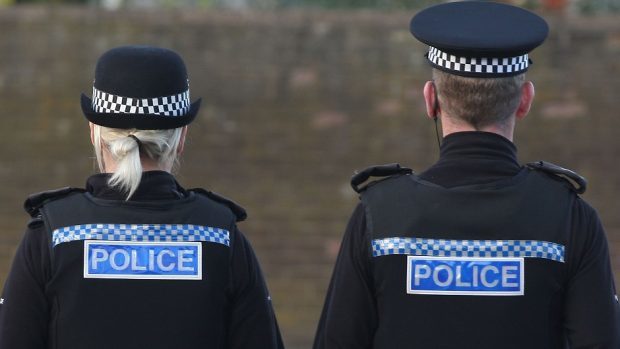The number of pedestrians killed on roads across the north and north-east is declining, but safety campaigners believe more must still be done to protect people.
There were 28 pedestrians hit by vehicles in Aberdeen last year, with an additional 17 in Aberdeenshire, 17 in the Highlands and three in Moray.
Sadly four of those casualties died.
The figures, obtained through a Freedom of Information request, are a stark reminder of the dangers ever present on the road, despite proof that the figures have been falling in the last three years.
In 2016, there were 146 collisions involving pedestrians in the north-east and Highlands – of which six were fatal.
In 2017, this number had dropped to 109 incidents, seven of which were fatal and the number of incidents continued to fall in 2018.

But while the decline in numbers is positive, road safety charities have warned that more still needs to be done.
A spokesman from national road safety charity Brake said: “It is positive to see the number of crashes involving pedestrians decreasing, but no-one should lose their lives on our roads.
“Pedestrians are among some of the most vulnerable road users and we would encourage drivers to be aware of their safety at all times.
>> Keep up to date with the latest news with The P&J newsletter
“We need the Scottish Government to take action too and reduce national default speed limits to create a safer environment for our most vulnerable road users.”
Earlier this month, police confirmed that a pedestrian had been killed as a result of a collision with a van on the A96 Forres bypass.
The pedestrian was taken to Dr Gray’s Hospital in Elgin, but pronounced dead a short time later.
Local councillor George Alexander described it as a “dangerous” stretch of road, pointing out it was a second fatality at almost exactly the same spot.
Popular Forres Academy pupil Michael Campbell, 15, died after being hit by a van in 2002 after leaving his part-time job at Christie Elite nursery.
Mr Alexander said of the latest death: “This is a great tragedy and my thoughts go out to his family and friends.
“It is not the first time there has been a death at that same scene as a number of years ago a young schoolboy was killed by a vehicle there.
“It is a fast bit of road and it is hard to judge how fast traffic is going there.”
In December last year, a pedestrian died following a crash on the A835, with police launching an investigation into the Highland crash.
And both an investigation and reconstruction took place in Aberdeen in the autumn, in the wake of a pensioner’s death after she was struck by a lorry in the city’s King Street.
A Transport Scotland spokesman said: “The Scottish Government is wholeheartedly committed to improving the safety of vulnerable road users, such as pedestrians, which is why they were identified in 2016 as a priority area in the mid-term review of Scotland’s Road Safety Framework to 2020.
“Road safety partners agree that the primary focus should be encouraging more people to travel at an appropriate speed for the surrounding environment and driving conditions.
“However, one life lost on our roads is one too many.
“That’s why we have set casualty reduction targets which show a long-term downward trend.
“Overall, total reported road casualties have fallen by 14% from 2016 and are at their lowest levels since annual records began in 1950.
“We are clear that 20 mph speed limits are a good idea and the Scottish Government actively encourages the implementation of 20 mph speed limits in the right environment, such as in residential areas and areas of towns or cities with a high volume of pedestrians and cyclists.”
Highlands and Islands MSP and road safety campaigner, David Stewart, said: “I am pleased to note that the number of pedestrian casualties on our roads is decreasing, but any casualty is a casualty too many.
“We all have to show respect to all road users and drive according to the prevailing conditions and of course within the law.
“Pedestrians in some cases can help themselves by ensuring they are wearing bright or fluorescent clothing while walking on poorly lit or unlit roads at night.
“Drivers should always be prepared to react to the unexpected.”
